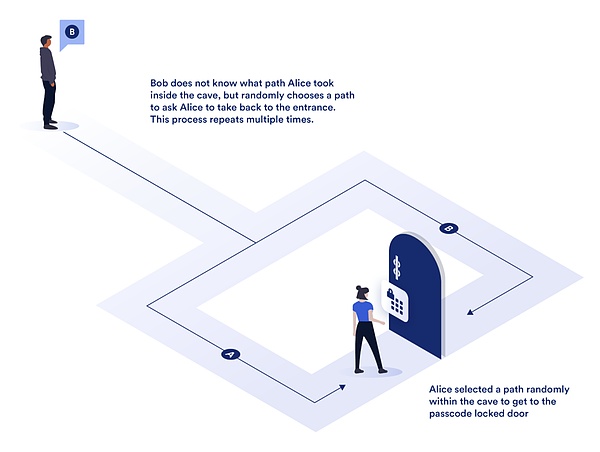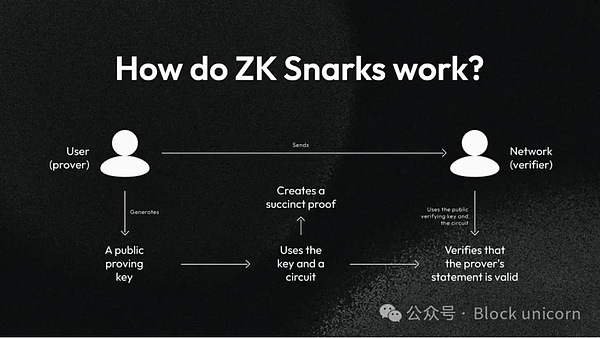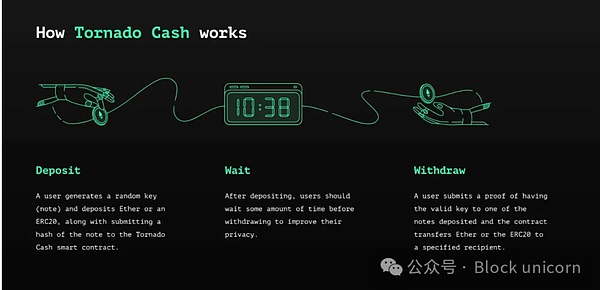
Author:0xKira

Preface
In the ever-evolving landscape of cryptography and blockchain, few innovations have attracted as much attention as zero-knowledge (ZK) proofs.Once an obscure academic concept in computer science theoretical papers, zero-knowledge proofs have rapidly moved from paper to mainnet, becoming the cornerstone of the next generation of cryptographic infrastructure.
At its core, zero-knowledge proofs challenge a long-standing assumption in digital systems: that verification requires exposing information.Whether it’s logging into an app, verifying identity, or confirming a transaction, we’ve always needed to disclose certain information in order to gain trust.Zero-knowledge proof technology breaks this trade-off, allowing us to prove facts about identities, data, or computations without revealing underlying information.
In addition to privacy protection, zero-knowledge proofs enable scalability, interoperability, and trustless verification on a global scale.From ZK rollups that scale blockchain throughput, to privacy-preserving identity and compliance systems, zero-knowledge proofs are redefining what’s possible in crypto.
Summary
-
Zero-knowledge (ZK) proofs can verify information such as identity, balance, or transaction validity without revealing the underlying data.
-
Although zero-knowledge proof technology was first proposed in the 1980s, it has only recently become practical due to advances in computing, cryptography, and blockchain technology.
-
ZK Proofs power private transactions, decentralized identity, DAO voting, and cross-chain interoperability, while scaling Ethereum by packaging thousands of transactions into a single proof via ZK Rollup.
-
Although it is computationally intensive, the ZK rollup algorithm has instant finality, lower fees, and stronger security, making it ahead of Optimistic schemes.
What is a zero-knowledge proof?
Zero-knowledge (ZK) proof is a cryptographic method that enables one party (the prover) to prove to another party (the verifier) that a certain statement is true without revealing why the statement is true or any additional information.
For example, Alice wants to prove to Bob that she knows the password to a hidden door in a cave, but she cannot directly tell him the password.She enters the cave, opens the door, and emerges from the other side.Bob couldn’t see how she did it, but he knew she must have known the password.

The classic metaphor of zero-knowledge proof – Chainlink
Traditionally, verification requires the disclosure of some information: such as identity information, passwords, or data.Zero-knowledge proofs flip this model on its head, proving identity, authenticity, or ownership without exposing the data itself.
In a digital system, this means you can:
-
You can prove you are 18 years or older without revealing your date of birth.
-
Prove sufficient funds without revealing wallet balance
-
Prove the validity of the transaction without revealing the contents of the transaction
This ability to “prove without revealing information” is the foundation of a system that maintains privacy, security, and transparency, and zero-knowledge proof can take advantage of these two characteristics.
How do they work?
Zero-knowledge proofs rely on esoteric mathematical structures and cryptographic primitives, but conceptually they boil down to three basic properties:
-
Completeness: If the statement is true, an honest prover can convince the verifier that it is true.
-
Soundness: If a statement is false, no cheating prover will be able to convince the verifier that the statement is false.
-
Zero-Knowledge: The verifier does not learn anything other than that the statement is true.
There are actually several types of zero-knowledge proofs, but the current discussion focuses on two types: interactive and non-interactive zero-knowledge proofs.
In early designs, zero-knowledge proofs were interactive.Prover and verifier engage in a two-way conversation, with the verifier posing random challenges and the prover providing proofs in response, jointly building confidence in the truth of a statement.Although this model works in theory, in a blockchain environment, it is often difficult for all parties to interact in real time, so it is not very efficient.
To make it more practical, cryptographers developed non-interactive zero-knowledge proofs (NIZK), which only require the prover to send a message to the verifier.The most famous of these are zk-SNARKs, which are capable of generating extremely compact proofs and verifying them in milliseconds.Another variant is zk-STARKs, which requires no trusted setup and provides a level of post-quantum security.

How zk-SNARKs work – Midnight Network
Essentially, these systems allow provers to generate mathematical “fingerprints” of efficient calculations.The verifier can then check that fingerprint without re-doing the entire calculation.This is exactly why they are so powerful in blockchain scaling: thousands of transactions can be verified quickly and cheaply by simply checking a single cryptographic proof.
When were zero-knowledge proofs invented?
Zero-knowledge proofs date back to the mid-1980s, when researchers Shafi Goldwasser, Silvio Micali, and Charles Rackoff introduced the concept in their seminal paper “The Knowledge Complexity of Interactive Proof Systems” (1985).
Their early theoretical models laid the foundation for subsequent decades of cryptographic innovation, but it wasn’t until the 2010s, thanks to improvements in computational efficiency and the rise of blockchain technology, that zero-knowledge proofs became practical.
Projects such as Zcash, launched in 2016 and one of the first to deploy zero-knowledge proofs at scale, use zk-SNARKs to enable private transactions on a public ledger.Since then, zero-knowledge proof technology has evolved significantly, making it more efficient and faster to generate proofs, and new frameworks have emerged (such as zk-STARKs, Halo, and PLONK) that make it easier for developers to use and more suitable for real-world system scaling.
What are the applications of zero-knowledge proofs in the field of encryption?
The most intuitive and well-known application scenario is privacy-preserving transactions.Zero-knowledge proofs allow users to conduct transactions on a public blockchain without exposing sensitive information such as transaction amounts or counterparties.Zcash is a pioneer of this technology, introducing a mechanism of “shielded transactions” to protect user privacy while maintaining verifiable integrity on the chain.Building on this foundation, projects such as Tornado Cash, Aztec, and Railgun have extended zero-knowledge proof technology to Ethereum, enabling private smart contract interactions and confidential DeFi transactions.

How Tornado Cash works – Elliptic
In addition to privacy protection, zero-knowledge proofs are revolutionizing the world of digital identity and regulatory compliance.It supports selective disclosure, allowing users to prove their specific facts without revealing personal data.For example, users can prove that they have passed KYC verification without revealing their name, or confirm that they are not on a sanctions list without providing identifying information.This principle underlies emerging zero-knowledge identity systems like Worldcoin’s Proof of Personhood, Polygon ID, and zkPass.

Polygon ID: An identity system supporting zero-knowledge proofs – Polygon
Zero-knowledge proofs also have powerful applications in voting and governance.In decentralized autonomous organizations (DAOs), they can facilitate an anonymous but verifiable voting process, ensuring transparent results while protecting the identity privacy of individual voters.This helps reduce the risk of coercion or retaliation and encourages more honest participation in collective decision-making, thereby reinforcing the democratic principles of decentralized governance.
Another advantage of zero-knowledge proof is in the field of cross-chain verification.In a multi-chain environment, establishing trust between different blockchains has traditionally required intermediaries or complex bridging mechanisms.Zero-knowledge proofs offer a more elegant solution: a proof generated on one chain can prove the validity of its state, and the other chain can independently verify that proof.This enables trustless interoperability, allowing different blockchains to communicate securely without relying on centralized validators.
ZK technology is also improving Ethereum’s scalability through ZK Rollup.By packaging thousands of transactions into a single cryptographic proof, these rollups significantly reduce on-chain data load while ensuring security.The result is faster, lower-cost and more efficient transaction processing, laying the foundation for Ethereum to cope with large-scale applications without compromising its decentralized nature.
ZK Rollup detailed explanation
Of all the applications based on zero-knowledge proofs, ZK rollup is undoubtedly the most transformative.They solve one of the biggest challenges in cryptocurrency: blockchain scalability.

Since the birth of blockchain technology, all blockchains have faced the blockchain trilemma: that is, all blockchains can only achieve two of the three core attributes of security, scalability and decentralization.Blockchains like Ethereum, while secure and decentralized, are still slow and expensive.Each transaction must be verified by all nodes, which creates bottlenecks, limits throughput, drives up gas fees, and severely reduces the availability of the blockchain.
Rollup is a Layer-2 solution that executes transactions off-chain and then publishes aggregated information back to the main chain or Layer-1 (usually Ethereum).Rollup is mainly divided into two types: Optimistic rollup and ZK rollup.
In ZK Rollup, hundreds or thousands of off-chain transactions are packaged together.The prover generates a zero-knowledge proof (also called a validity proof) indicating that all packaged transactions comply with the rules of the blockchain.This single proof is then submitted to the main chain, which can quickly and conclusively verify it.

How ZK Rollup works – Messari
This design significantly reduces Layer-1’s data volume and computational burden while maintaining the same security guarantees as processing each transaction individually, thereby eliminating Layer-1’s speed and scale bottlenecks.
Some representative projects of ZK rollup include:
-
zkSyncEra: Developed by Matter Labs, uses zk-SNARKs for fast finality.
-
StarkNet: Built on zk-STARKs, emphasizing scalability and transparency
-
Polygon zkEVM: A zero-knowledge implementation of the Ethereum Virtual Machine (EVM), making it fully compatible with existing smart contracts on Ethereum.
-
Lighter: A sustainable DEX platform built on a custom ZK rollup using zk-SNARKs, specifically Plonky2.
Advantages of ZK Rollup
By compressing thousands of transactions into a single cryptographic proof, ZK rollups can significantly increase throughput, allowing blockchains like Ethereum to handle more activity without sacrificing decentralization or security.
Security is another key benefit.Unlike Optimistic rollups, which rely on financial incentives and a week-long challenge period to detect fraud, ZK rollups use mathematical validity proofs to guarantee correctness in advance.Once the proof is verified on-chain, the underlying transaction is final and immutable, eliminating latency and uncertainty.
This also means faster confirmations.Transactions in a ZK rollup are settled as soon as their corresponding proofs are verified, giving users almost immediate access to final results compared to the waiting times common in Optimistic systems.
Cost-effectiveness is another major advantage.Because ZK Rollups only submit a very small amount of data to the Layer-1 blockchain, gas fees are significantly reduced, making it cheaper for users and applications to run on Ethereum.
Even more exciting is that ZK rollup opens the door to enhanced privacy protection.Since it is itself built on zero-knowledge cryptography, confidentiality could theoretically be embedded directly into the rollup itself, enabling private and verifiable transactions at scale.
The main limitation currently is the computational requirements.Generating zero-knowledge proofs still consumes a lot of resources and requires powerful hardware and advanced cryptography techniques.However, continued advancements, especially in hardware acceleration, circuit design, and recursion proofs, are steadily reducing these costs, making each generation of ZK rollups more efficient.
Comparison with Optimistic Rollup
Optimistic rollups, such as Arbitrum and Optimism, follow a different philosophy.They default to all off-chain transactions being valid.Only when someone challenges this assumption will the system ask for a “proof of fraud” to verify the dispute, a process that usually takes about a week.This model works well in practice, but introduces delays in final confirmation of transactions and relies on incentives for participants to detect and report invalid activity.
ZK rollup comes with a zero-knowledge validity proof for each batch of transactions, mathematically confirming its correctness before being written to the main chain, thus providing instant finality and stronger security, but it also brings higher technical complexity and greater calculation amount.
Essentially, the two models represent different trade-offs.Optimistic Rollup is easier to implement and currently dominates Ethereum’s Layer-2 space due to its simplicity and full compatibility with the Ethereum Virtual Machine (EVM).ZK rollup is more complex and computationally intensive, but it offers the potential for faster settlements, lower costs, and built-in privacy.
Conclusion
Zero-knowledge proofs represent a paradigm shift in how we approach trust, privacy, and verification in digital systems.This abstract cryptographic theory, which originated in the 1980s, has become one of the most promising technologies driving the development of the next generation of decentralized infrastructure.
In the cryptocurrency space, zero-knowledge proofs power private transactions, decentralized identity, cross-chain interoperability, and most importantly, scalable rollup architectures that exponentially increase throughput while maintaining Ethereum-level security.Their application scope also extends beyond blockchain to areas such as finance, artificial intelligence, and data verification.
Although the application of zero-knowledge proofs is still in a relatively early stage, its development trajectory is already clear.Zero-knowledge proofs are transforming from a novel technology in cryptography to an inevitable part of infrastructure construction.If blockchain is to scale to billions of users while ensuring privacy and decentralization, then zero-knowledge proofs may well be the key to unlocking that future.







